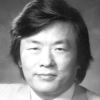Susumu Tonegawa

Susumu Tonegawa
Susumu Tonegawais a Japanese scientist who was the sole recipient of the Nobel Prize for Physiology or Medicine in 1987, for his discovery of the genetic mechanism that produces antibody diversity. Although he won the Nobel Prize for his work in immunology, Tonegawa is a molecular biologist by training and he again changed fields following his Nobel Prize win; he now studies neuroscience, examining the molecular, cellular and neuronal basis of memory formation and retrieval...
NationalityJapanese
ProfessionScientist
Date of Birth6 September 1939
CountryJapan